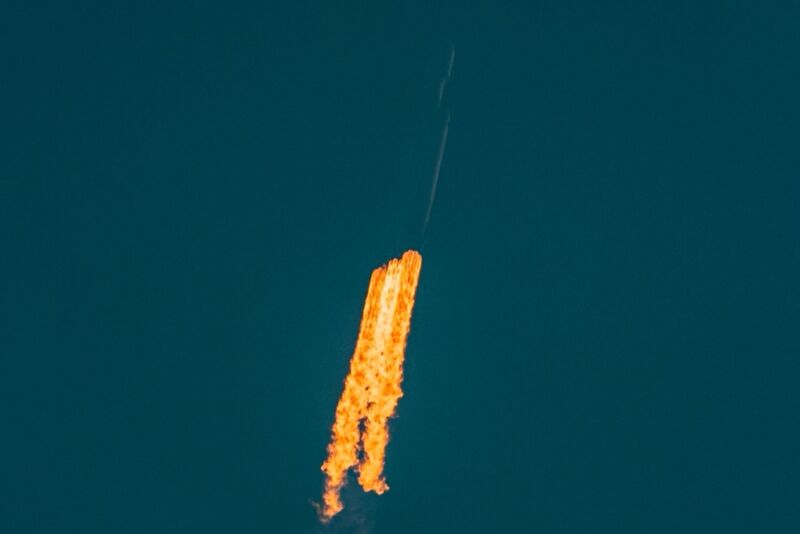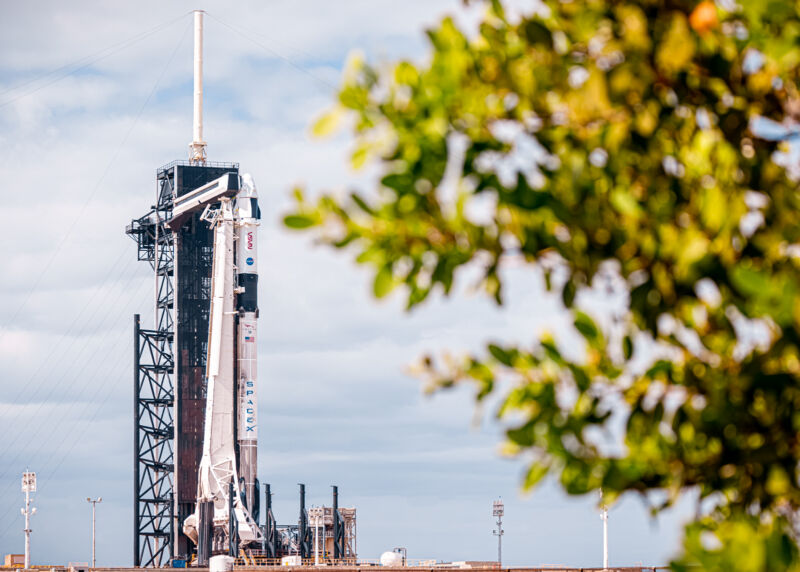
A dense fog shrouded much of Kennedy Space Center on Tuesday morning, largely obscuring the liftoff of the most powerful operational rocket in the world.
But the Falcon Heavy took off promptly at 9:41 am ET, climbing steadily above the Florida coast on its way to orbit. A few minutes into the launch, two side-mounted boosters—slightly modified versions of SpaceX's Falcon 9 rocket—peeled away from the center core of the rocket.
As that center core continued to climb toward orbit, the boosters fell back to Earth, burning a subset of their nine engines twice and making a picture-perfect side-by-side landing just a few kilometers away from where they launched from. SpaceX will now refurbish these side boosters for reuse on the military's next Falcon Heavy mission, USSF-67, in January. The center core was not recovered.
This was just the fourth launch of the Falcon Heavy rocket, and the first stage did its job, delivering the upper stage and two payloads for the US Space Force into orbit. The upper-stage Merlin vacuum engine will now perform two burns before injecting the classified payloads directly into geostationary orbit later on Tuesday.
The Falcon Heavy has not flown a mission since April 2019, partly due to a lack of demand but mostly because of payload readiness. The USSF-44 mission that launched Tuesday morning was originally scheduled for December 2020. Another Space Force mission on the Falcon Heavy, USSF-52, was originally supposed to fly in October 2021. NASA's Psyche asteroid mission was supposed to fly in September but was also delayed after the payload was not ready.
But now that this Space Force mission has flown, the rocket's cadence should increase significantly. As many as eight to 10 flights of the large rocket could occur between now and the end of 2024, including some high-profile missions for the US government, notably NASA's $4 billion Europa Clipper spacecraft due to launch in October 2024. Both the Department of Defense and NASA are now entrusting some of their most valuable payloads to this complex and relatively new rocket that made its debut in 2018.
Remarkably, this was SpaceX's 50th launch of this year, for a cadence of one orbital launch every 6.08 days. By way of comparison, it took the company nearly eight years to launch its first 50 Falcon 9 rockets, from 2010 to 2018.
Much of that increased cadence capability has been driven by SpaceX's ability to reuse the first stages of its rockets. Monday's booster landings were the 150th and 151st successful first-stage landings of all time.
Because of the dual landing of the Falcon Heavy side boosters, SpaceX now has one more landing—51 in total—than launches this year.



3175x175(CURRENT).thumb.jpg.b05acc060982b36f5891ba728e6d953c.jpg)

Recommended Comments
There are no comments to display.
Join the conversation
You can post now and register later. If you have an account, sign in now to post with your account.
Note: Your post will require moderator approval before it will be visible.